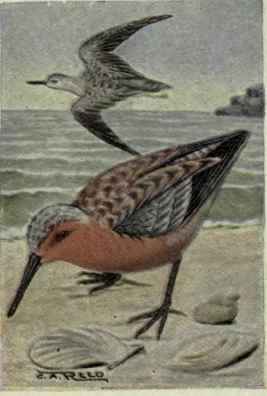Knot
Description
This section is from the book "Bird Guide: Water Birds, Game Birds And Birds Of Prey East Of The Rockies", by Chester A. Reed. Also available from Amazon: The Bird Book.
Knot
234. Tringa canutus. 10.5 in.
Bill moderately long and quite stout; form more robust than most of our shore birds. Adults in summer, mixed brownish and gray, above, and uniform reddish-brown below. In winter, plain gray above and white below; young similar but with feathers on the back edged with white. It is an abundant species on the Atlantic coast during migrations, and is known by various names such as Red-breasted Sandpiper and Robin Snipe, when in summer dress, and as Gray-back when in winter plumage. It is usually found on the ocean beach, where it follows the waves as they recede, picking up numerous insects left there, and retreating before the next wave.
Notes. - An ordinary Sandpiper whistle.
Nest. - Not positively known, but a supposed egg obtained by Lieutenant Greely in the vicinity of Fort Conger was pea-green in color, with small brown spots. (1.10 x 1.00).
Range. - Breeds in the Arctic regions; migrates chiefly on the Atlantic coast, to South America.

Continue to:


